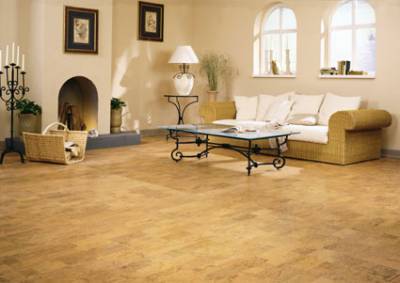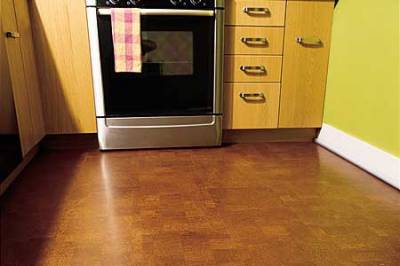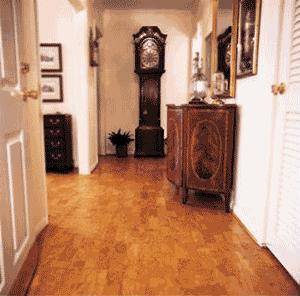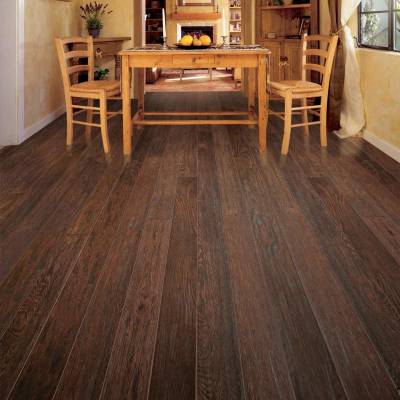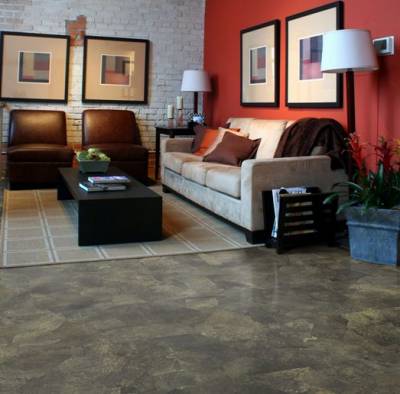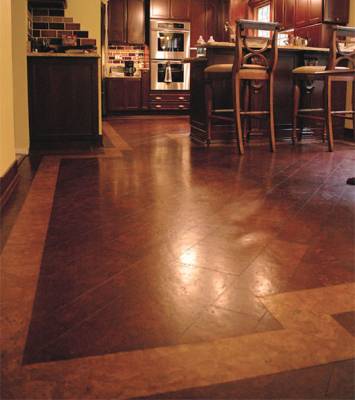- It’s Natural and Safe
Cork Flooring is a completely natural flooring product, largely unchanged by processing. As far as its features and innate benefits are concerned, no man-made material can substitute or replace cork.
Cork is naturally fire resistant and it does not release any toxic gases on combustion, and cork is an anti-static surface.
It’s used by NASA as an insulator on space shuttles and unmanned rockets. (A ¼” thick layer of cork, for example, is used on the Delta II rocket — the Mars Rover II — to prevent rocket fuel from becoming too hot during engine ignition.)
However, because cork is a natural product it is affected by humidity. Cork flooring expands and contracts. Humidity levels need to be between 30% and 60% to prevent cork flooring from either drying out or becoming too moist. Also, cork has shade variations that enhance its look but because cork is a natural product, fading will occur with constant exposure to sunlight.
- It’s Durable and Resilient
Cork floors are very durable in nature. They have a very long life and can be repaired if damaged. Due to the elastic nature and miniature cells composition, it is an extremely durable flooring material.
Cork has a unique cellular structure with millions of cells enclosed with a gaseous substance, providing a comfortable cushioned surface that gives a soft feeling to the feet and joints of people walking and standing on cork floors for extended periods.
Cork flooring is very compressible and elastic. If heavy weight or a sudden impact has caused a dent in the cork floor, it will resume to its original shape over a period of time once the pressure is released.
Although Cork is resilient flooring, certain care must be taken to prevent damage from furniture feet and pet nails, etc. Furniture feet should have pads on them; pet nails must be kept trimmed. Minor scratches in cork floor can be camouflaged.
- It’s Hypoallergenic
Cork is among the best flooring options for people with allergies. Due to the presence of Suberin, a naturally occurring substance, it’s resistant to deterioration and water damage, resists the growth of mildew and bacteria, prevents the cultivation of mold, and keeps away bugs and dust mites.
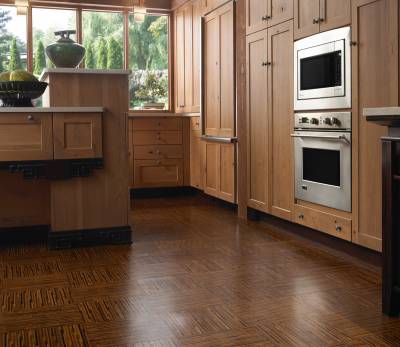
- It Stands the Test of Time
Cork is not a newly introduced flooring material. It has been used in flooring for well over 100 years. It was first used in the United States circa 1890 and became popular when renowned American architect Frank Lloyd Wright chose cork flooring for many of his home designs. Some famous buildings where cork flooring was used are the First Congressional Church in Chicago (1890); the Mayo Clinic and Plummer Building (1912); the U.S. National Archives (1930); the U.S. Library of Congress; and Lafayette College in Easton, Pennsylvania (1930). In Canada, a famous example is the old Toronto Stock Exchange (although the cork floors used there were the old massive cork tiles that could be sanded and refinished, like hardwood).
Cork was extremely popular in the U.S. for almost the entire first half of the 20th Century, from 1900 to 1945. It was popular and widely used in both residential and commercial applications.
From 1900–1945, cork was a common flooring choice for government buildings, banks, universities and houses. (Some examples have been cited above.)
- It’s Quiet and Warm
Cork is warm under the feet. As Cork is 50% air, it will absorb the heat of your feet while walking on it and will reflect it back to you. This is why you have a nice warm sensation when walking with bare feet on Cork. Cork flooring is exclusively warm under foot and insulates heat and cold.
Cork flooring is regarded as one of the better choices in flooring for natural sound insulation because it absorbs ambient sound and generally reduces noise. This makes for a calm interior atmosphere.
Cork is quiet and resilient (it “gives” under normal pressures) because there are 100-million prism-shaped, air-filled cells per cubic inch of cork. Cork has an insulating factor of about R-2.8 per inch. Its natural insulating properties mean cork flooring can help reduce heating and cooling costs.
- It’s Beautiful and Versatile
Cork has high visual appeal created by its distinctive random grain and they work really well in spaces that get used: entrances, hallways, kitchens, family rooms, bedrooms.
The natural grains of the cork mean no two tiles or planks look alike.
Light, medium and dark cork colours are achieved by baking the cork at varying temperatures. Stains for custom colours are applied just prior to the application of UV Acrylic Varnish.
Cork is available in a range of textures for different décor needs and styles. Cork tiles or planks can be mixed and matched to enhance different décor styles and create customized looks.
For a casual look; cork pulls together mix & match patterns from rugs, tapestries, and furniture, creating a warm, comfortable look. A “Casual” style, for example, is a “Roots” kind of furniture look, or an “Ikea” kind of casual look. Furniture can be mixed, but the cork floor pulls all the room elements together.
If you’re looking for a more modern décor; modern interiors have sharp lines and minimalist looks in terms of furniture. The modern look can be stark, but the use of cork textures warm up the room and prevent starkness. Cork also adds a dramatic touch to a modern interior.
- It’s Economical and Environmentally Sound
Cork flooring comes from the bark of the cork oak species. The bark is harvested without any negative environmental impact on individual cork oaks, in fact the bark re-grows and can be harvested again in 9 – 12 years. This makes cork flooring among the most environmentally friendly of flooring materials.
Cork is the bark of the Cork Oak tree. Cork forests cover 5.4 million acres around the world, with the primary areas being the Mediterranean region of Europe (Portugal, Spain) and northern Africa.
50% of the world’s cork production is in Portugal, mostly because of the climate and soil conditions that make Portugal a prime area for the growth of cork oak forests.
Cork is meticulously harvested by hand. On average, trees are not harvested until they are mature — about 25 years old. The bark is then stripped on 9-year cycles. No cork trees have ever been taken down during harvesting, and only 50% of the bark is removed at one time. This enables the cork oak tree to use its own natural defenses to protect itself from disease and the elements. Cork oak trees live 150 to 200 years.
After cork bark is harvested and aged for 3–6 months it’s cleaned and boiled for production. The rough exterior is cut off and the rest is ground up and mixed in a binder. A paste is added to cork granules, and then the cork is molded into large blocks and baked. Once the cork is baked, the blocks are sliced to make cork planks or tiles.

